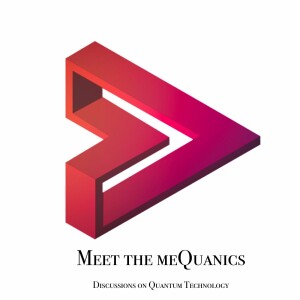
meQuanics - QSI@UTS Seminar Series - S22 - Lana Mineh (Bristol University)
 2021-11-14
2021-11-14
During this time of lockdown, the centre for quantum software and information (QSI) at the University of Technology Sydney has launched an online seminar series. With talks once or twice a week from leading researchers in the field, meQuanics is supporting this series by mirroring the audio from each talk. I would encourage if you listen to this episode, to visit and subscribe to the UTS:QSI YouTube page to see each of these talks with the associated slides to help it make more sense.
https://youtu.be/rOKpLd4X9jE
Finding the ground state of the Hubbard model using hybrid quantum-classical computing.
TITLE: Strategies for solving the Fermi-Hubbard model on near-term quantum computers
SPEAKER: Lana Mineh
AFFILIATION: Quantum Engineering Technology Labs, University of Bristol, UK
HOSTED BY: Prof Michael Bremner, UTS Centre for Quantum Software and Information
ABSTRACT: The Fermi-Hubbard model is of fundamental importance in condensed-matter physics, yet is extremely challenging to solve numerically. Finding the ground state of the Hubbard model using variational methods has been predicted to be one of the first applications of near-term quantum computers. Here we carry out a detailed analysis and optimisation of the complexity of variational quantum algorithms for finding the ground state of the Hubbard model, including costs associated with mapping to a real-world hardware platform. The depth complexities we find are substantially lower than previous work. We performed extensive numerical experiments for systems with up to 12 sites. The results suggest that the variational ansätze we used -- an efficient variant of the Hamiltonian Variational ansatz and a novel generalisation thereof -- will be able to find the ground state of the Hubbard model with high fidelity in relatively low quantum circuit depth. Our experiments include the effect of realistic measurements and depolarising noise. If our numerical results on small lattice sizes are representative of the somewhat larger lattices accessible to near-term quantum hardware, they suggest that optimising over quantum circuits with a gate depth less than a thousand could be sufficient to solve instances of the Hubbard model beyond the capacity of classical exact diagonalisation.
RELATED ARTICLES: Strategies for solving the Fermi-Hubbard model on near-term quantum computers: https://arxiv.org/abs/1912.06007
OTHER LINKS: Quantum Engineering Technology Labs: bristol.ac.uk/qet-labs/
More Episodes
Create your
podcast in
minutes
- Full-featured podcast site
- Unlimited storage and bandwidth
- Comprehensive podcast stats
- Distribute to Apple Podcasts, Spotify, and more
- Make money with your podcast
It is Free
- Privacy Policy
- Cookie Policy
- Terms of Use
- Consent Preferences
- Copyright © 2015-2024 Podbean.com







